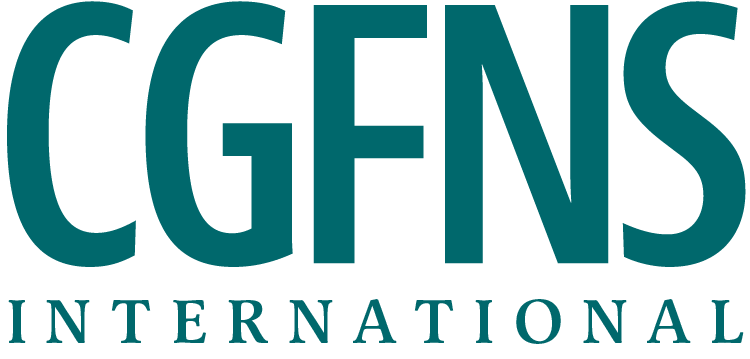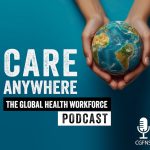Please select the appropriate button below to go the portal login based on your service need.
Publications
2022
International Nurse Recruitment Beyond the COVID-19 Pandemic: Considerations for the Nursing Workforce Leader
Shaffer, F.A., Bakhshi, M., Cook, K., Álvarez, T.D. (2022). International Nurse Recruitment Beyond the COVID-19 Pandemic: Considerations for the Nursing Workforce Leader. Nurse Leader, 20(2): 161-167. DOI: 10.1016/j.mnl.2021.12.001
2021
Nursing in Albania: A Catalytic Force in Transforming Health Professionals and Health Care
Rocco, G., Affonso, D., Caruso, R., Duka, B., Giardina, B., Notarnicola, I., Sabatino, L., Shaffer, F.A., Stievano, Al. (2021). Nursing in Albania: A Catalytic Force in Transforming Health Professionals and Health Care. Journal of Nurse Scholarship, 53(4): 479-489. DOI: 10.1111/jnu.12655
2021
Ethical Challenges and Nursing Recruitment During COVID-19
Stievano, A., Bakhshi, M., Shaffer, F.A., Hamilton, D. (2021). Ethical Challenges and Nursing Recruitment During COVID-19. Nursing Ethics, 28(1): 6-8. DOI: 10.1177/0969733021989180
2021
Leveraging the Trust of Nurses to Advance a Digital Agenda in Europe: A Critical Review of Health Policy Literature
De Raeve, P., Davidson, P.M., Shaffer, F.A., Pol, E., Kumar Pandey, A., Adams, E. (2021). Leveraging the Trust of Nurses to Advance a Digital Agenda in Europe: A Critical Review of Health Policy Literature, European Commission. https://doi.org/10.12688/openreseurope.13231.2
2021
The Contributions of Immigration Nurses in the U.S. During the COVID-19 Pandemic: A CGFNS International Study
Shaffer, F.A., Bakhshi, M.A., Cook, K.N., Álvarez, T.D. (2021). The Contributions of Immigration Nurses in the U.S. During the COVID-19 Pandemic: A CGFNS International Study. Nurse Leader, 19(2), 198-203. DOI: 10.1016/j.mnl.2020.11.007
2020
Nurse and Health Professional Migration During COVID-19
Shaffer, F.A., Rocco, G., Stievano, A. (2020). Nurse and Health Professional Migration During COVID-19. Prof Inferm, 73(3): 129-130. DOI: 10.7429/pi.2020.733129
August, 2020
Nurse turnover: Understand it, reduce it
Shaffer, F. A., Curtin, L. (August 2020). Nurse turnover: Understand it, reduce it. American Nurse Journal, 15(8).
https://www.myamericannurse.com/nurse-turnover-understand-it-reduce-it/
Because of the stress involved in nursing, many healthcare organizations have high rates of nurse turnover. The cost of nurse turnover can have a huge impact on a hospital’s profit margin. Managing turnover is about mindfully creating a workplace culture that supports high performers financially, intellectually, and psychologically while at the same time providing a means to efficiently and fairly weed out poor performers.
October, 2019
Disrupting Policy and Practice: Refugees Shaping the Future.
Shaffer, F. A., Sciasci, N. G., & Álvarez, T. D. (October/December 2019). Disrupting Policy and Practice: Refugees Shaping the Future. Nursing Administration Quarterly, 43(4), 370–373. doi: 10.1097/naq.0000000000000368
The focus of this article is to identity how refugees, specifically refugee nurses, are reshaping standard policy practices when it comes to integration and inclusion, as well as economic and social well-being. It is critical for societies to recognize refugee nurses’ professional qualifications, skills, and abilities in order to address the ongoing shortages of health professionals that many nations are facing today.
October, 2019
Digital Health: Join the Movement.
Shaffer, F. A., & Preziosi, P. (October/December 2019). Digital Health: Join the Movement. Nursing Administration Quarterly, 43(4), 351–353. doi: 10.1097/naq.0000000000000371
Digital health is on the precipice of a major breakthrough to disrupt the traditional models of health care delivery. Health professionals, regardless of what part of the healthcare industry they serve, must embrace this disruption wholeheartedly in practice, education, and regulation.
October, 2019
Evolution of Care and Nursing: Moving with the Patients.
Preziosi, P., & Shaffer, F. A. (October/December 2019). Evolution of Care and Nursing: Moving with the Patients. Nursing Administration Quarterly, 43(4), 329–332. doi: 10.1097/naq.0000000000000372
As the baby boomer generation ages, we will see dramatic growth in healthcare spending, which will influence the health care market in new ways. Nurses now have more tools (ie, mHealth, telemedicine, and electronic health records) that they can use to provide assistance to their practices outside of acute care settings. These realities are all contributors to an evolving trend: retail health.
May, 2019
Overview and Summary: Past, Present, and Future: Nurses Address the Times of Our Lives
Shaffer, F. A. (2019). Overview and Summary: Past, Present, and Future: Nurses Address the Times of Our Lives. OJIN: The Online Journal of Issues in Nursing, 24(2). doi: 10.3912/OJIN.Vol24No02ManOS
In a world of uncertainty, nurses should: become more entrepreneurial, embrace technological advancement, and globalize their mindset and practices. The power of nursing extends beyond bedside. By learning from our experiences as well as our mistakes, nurses can adapt and evolve to fit the needs of the future.
January, 2019
The Role of Nurses in Advancing the Objectives of the Global Compacts for Migration and on Refugees.
Shaffer, F., Bakhshi, M., Farrell, N., & Álvarez, T. (January/March 2019). The Role of Nurses in Advancing the Objectives of the Global Compacts for Migration and on Refugees. Nursing Administration Quarterly, 43(1), 10–18. doi: 10.1097/naq.0000000000000328
Nurses are facilitators of migration and can help ensure that the benefits of migration are maximized and the challenges are mitigated. Often, nurses are migrants themselves. Leveraging nurses’ knowledge, experience, talents, and compassion is crucial for attaining the objectives of both the Global Compact for Migration and the Global Compact on Refugees.
January, 2019
Guest Editorial.
Shaffer, F. A. (January/March 2019). Guest Editorial. Nursing Administration Quarterly, 43(1), 3. doi: 10.1097/NAQ.0000000000000323
The greater nursing community work together to become globally competent, evolving beyond traditional, inward models of thinking by taking on a more global approach—in education, research, practice, and beyond—to help tackle some of the leading issues facing humanity.
2018
Shaping nursing profession regulation through history – a systematic review.
Stievano, A., Caruso, R., Pittella, F., Shaffer, F. A., Rocco, G., & Fairman, J. (2018). Shaping nursing profession regulation through history – a systematic review. International Nursing Review, 66(1), 17–29. doi: 10.1111/inr.12449
The research explored factors that historically influenced the socio-contextual circumstances upon which governments made regulatory changes. A deeper understanding of the developments of the nursing regulatory institutions provides the foundation for portable standards that can be applied across an array of jurisdictions to guarantee a better public safety.
April, 2018
Advocating to Protect Our Nurses: Addressing Unethical Recruitment of Foreign-Educated nurses.
Shaffer, F., Bakhshi, M., & Jacobs, A. (April/June 2018). Advocating to Protect Our Nurses: Addressing Unethical Recruitment of Foreign-Educated nurses. Nursing Administration Quarterly, 42(2), 107–114. doi: 10.1097/naq.0000000000000274
The Alliance for Ethical International Recruitment Practices’ Health Care Code for Ethical Recruitment and Employment Practices and WHO’s Global Code of Practice represent important models for collaboration across diverse stakeholder groups to promote the rights of foreign-educated nurses in an era of increasing nurse migration.
2016
A New Model for Assessing Entry-Level Education of Internationally Educated Nurses: A Retrospective Perspective.
Shaffer, F. A., Robinson, M. A., Dutka, J. T., & Tuttas, C. (2016). A New Model for Assessing Entry-Level Education of Internationally Educated Nurses: A Retrospective Perspective. Journal of Nursing Regulation, 6(4), 51–57. doi: 10.1016/s2155-8256(16)31008-0
No formal international standard for nursing education exists; therefore, the scope of practice and the role of the nurse may differ from one country to another. Licensing authorities in destination countries should aim to provide a fair, valid, and consistent assessment of internationally-educated nurses. The researchers used the partnership between the NNAS and CGFNS as a model, which has provided a conceptual framework for credential assessment for the nursing profession and beyond.
June, 2016
Code for ethical international recruitment practices: the CGFNS alliance case study
Shaffer, F. A., Bakhshi, M., To Dutka, J., & Phillips, J. (2016). Code for ethical international recruitment practices: the CGFNS alliance case study. Human Resources for Health, 14(S1), 113–119. doi: 10.1186/s12960-016-0127-6
The case study describes a multi-stakeholder effort to promote ethical recruitment practices and offers both a historical perspective and a conceptual framework for examining the multiplicity of factors affecting the migration of human resources for health. The lessons learned provide critical insights into the factors pertaining to the relevancy and effectiveness of the WHO Global Code of Practice, as well as recommendations for strengthening the effectiveness of the WHO Code.
2016
Human Resources for Health 2030 and the regulatory agenda.
Benton, D. C., & Shaffer, F. A. (2016). Human Resources for Health 2030 and the regulatory agenda. Journal of Nursing Management, 24(6), 705–707. doi: 10.1111/jonm.12420
In this editorial, the authors discuss the need for regulatory reform that needs to take place internationally in order to make progress towards achieving universal health coverage and the UN’s Sustainable Development Goals.
2016
How the nursing profession can contribute to sustainable development goals.
Benton, D., & Shaffer, F. A. (2016). How the nursing profession can contribute to sustainable development goals. Nursing Management, 23(7), 29–34. doi: 10.7748/nm.2016.e1534
This article reports the results of a scientometrics analysis of the published literature related to the Millennium Development Goals and Sustainable Development Goals indexed in CINAHL, which identified the underlying themes addressed by nurses and midwives. Although nursing was slow to engage with the MDG agenda, it has made some progress in contributing to SDG scholarship. So far this contribution has been narrowly focused, but the profession could contribute to all 17 of the SDG goals.
October, 2015
Business Case for Ethical Recruitment
Franklin A. Shaffer, EdD, RN, FAAN, FFNMRCSI, Mukul Bakhshi, JD, and Esther M. Kim, MSN, RN, CNRN, Nurse Leader, pages 40-43, 48, October 2015
2014
The role of internationally educated nurses in a quality, safe workforce.
Sherwood, G. D., & Shaffer, F. A. (2014). The role of internationally educated nurses in a quality, safe workforce. Nursing Outlook, 62(1), 46–52. doi: 10.1016/j.outlook.2013.11.001
This article examines nurse migration and employment of internationally educated nurses in the context of supporting and maintaining safe, quality patient care environments via regulations governing their movement, educational comparability, and quality and safety competencies that meet certain standards.
May, 2014
The Joys of Travel Nursing
Shaffer, Franklin A., American Nurse Today, Vol. 9, Number 5, May 2014
May, 2014
Leading Means Consensus
Shaffer, Franklin A. Journal of Infusion Nursing, Volume 37, Number 3, May/June 2014
March, 2014
The Future of Nursing: Domestic Agenda, Global Implications
Shaffer, F. A., Davis, C. R., Dutka, J. T., & Richardson, D. R. (2014). The Future of Nursing. Journal of Transcultural Nursing, 25(4), 388–394. doi: 10.1177/1043659614523474
The 2010 Institute of Medicine report, The Future of Nursing: Leading Change, Advancing Health, challenges the nursing profession to take a key role in redesigning the healthcare system. This article addresses four IOM recommendations relevant to internationally educated nurses and their policy implications: nurse residency programs, lifelong learning, leading change to advance health, and interprofessional health care workforce data.
March, 2014
Scales, Causes and Implications of the Primary Care Nursing Shortage
MacLean L, Hassmiller S, Shaffer F, Rohrbaugh K, Collier T, and Fairman J. Annual Review of Public Health, Volume 35, pages 443-457, March 2014
January, 2014
Ensuring a Global Workforce: A Challenge and Opportunity
Shaffer, F. A. (2014). Ensuring a global workforce: A challenge and opportunity. Nursing Outlook, 62(1), 1–4. doi: 10.1016/j.outlook.2013.08.001
Nurses represent a major sector of the workforce in the global economy, and their movement from country to country is a critical concern for both source and destination countries. This guest editorial discusses the myriad of legal, economic, cultural, social, and educational ramifications associated with the globalization of the nursing workforce.
January, 2014
The Role of Internationally Educated Nurses in a Quality, Safe Workforce
Sherwood G, Shaffer F. Nursing Outlook, Volume 62, Issue 1, pages 46-52, January 2014
January, 2014
Perceptions of Employment-Based Discrimination Among Newly Arrived Foreign-Educated Nurses
Pittman P, Davis C, Shaffer F, Herrera, C-N, Bennett, C. American Journal of Nursing, Volume 114, Issue 1 – pages 26–35, January 2014
2014
Original Research.
Pittman, P., Davis, C., Shaffer, F. A., Herrera, C.-N., & Bennett, C. (2014). Original Research. AJN, American Journal of Nursing, 114(1), 26–35. doi: 10.1097/01.naj.0000441792.93279.29
Researchers asked foreign-educated nurses recruited to work in the U.S. about their hourly wages; clinical and cultural orientation; wages, benefits, and shift or unit assignments; and job satisfaction. They found that 51% reported receiving insufficient orientation and 40% reported at least one discriminatory practice with regard to wages, benefits, or shift or unit assignments, raising practical and ethical concerns.
December, 2013
Amazing Apps: Space-age Tools for Clinicians
Shaffer F, Maliszewski S. American Nurse Today, Volume 8, Number 12, December 2013
October, 2013
Global Mobility for Internationally Educated Nurses: Challenges and Regulatory Implications
Shaffer, F. A., & Dutka, J. T. (2013). Global Mobility for Internationally Educated Nurses: Challenges and Regulatory Implications. Journal of Nursing Regulation, 4(3), 11–16. doi: 10.1016/s2155-8256(15)30124-1
This article presents the challenges and regulatory implications of nurses entering the United States on an occupational visa and in applying for a license to practice.
August, 2013
Travel Nursing and 21st Century Staffing
Tuttas C. Nurse Leader, Volume 11, Issue 4, pages 43-46, August 2013
June, 2012
Immigration and Contract Problems Experienced by Foreign-Educated Nurses
Pittman P, Herrera C, Spetz J, Davis CR., Medical Research and Review, Volume 69, Number 3, pages 351-365, June 2012
February, 2012
Perspectives on Credential Evaluation: Future Trends and Regulatory Implications
Shaffer F, To Dutka J. Journal of Nursing Regulation, Volume 3, Number 1, pages 26-31, January – February 2012
September, 2011
Destination U.S.A. – Knowing the Right Questions to Ask
Shaffer F. Medical Tourism Magazine, September 29, 2011
2011
An Integrative review of global nursing workforce issues
Nichols, B.N., Davis, C.R., & Richardson, D.R. In A. Debisette and J. Vessey (Eds.) Annual Review of Nursing Research, Volume 28, Nursing Workforce Issues, Chapter 5, 2011
December, 2011
Global Nursing Leadership: A Practical Guide
Nichols B, Shaffer F, Porter C. Nursing Administration Quarterly, Volume 35, Issue 4, pages 354-359, October/December 2011
November, 2011
What Nursing Leaders Must Master
Shaffer F. Nursing Administration Quarterly, Volume 35, Issue 4, p 291, October/November 2011
2011
Global nurse migration
Nichols, B.N., Davis, C.R., & Richardson, D.R., Power and politics in nursing and health care, sixth edition, pages 401-408, Philadelphia: Saunder/Elsevier, 2011
2010
International Models of Nursing
Nichols, B. Davis, C.R., & Richardson, D.R. In Institute of Medicine (Ed.) The Future of Nursing: Leading change, advancing health (Appendix J). Washington, DC: National Academies Press.
2010
The Official Guide for Foreign-Educated Allied Health Professionals
What You Need to Know About Health Care and the Allied Health Professions in the United States Davis C, Nichols B eds (2010)
2009
The Official Guide for Foreign-Educated Nurses
What You Need to Know About Nursing and Health Care in the United States Davis C, Nichols B eds (2009)
2008
Return Migration of Nurses
Haour-Knipe M, Davies A. 2008
December, 2007
Foreign trained nurses in U.S. healthcare
Nichols, B., Davis, C.R., & Gessert, C.E., The American Journal of Public Health, December 2007
March, 2007
Impact of Global Nurse Migration
Nichols B. White Paper from the 2008 FAST Health Workshop Nursing, Health & Environment in the Mid East, Doha, Qatar, March 23-25, 2007
2007
Building Global Alliances III
The Impact of Global Nurse Migration on Health Services Delivery,” Nichols B, 2007
2007
Nursing Self-Sufficiency/Sustainability in the Global Context
Little L, Buchan J. 2007
2007
Building international bridges
CGFNS International, Inc., In D.H. Berger, J.P. Curran, & W.A. Stock (Eds), The immigration nurse book, New York: ILW.com. Contributing CGFNS author, 2007
2006
International nurses perceptions of their clinical practice
Edwards, P., & Davis, C. R., Journal of Continuing Education in Nursing, Volume 37 #6, pages 265-9, 2006
March, 2006
The Basics of Cultural Competence: A Conversation with Barbara Nichols
Padilla P. NSNA Imprint, February/March 2006
2006
Positive Practice Environment: Key Considerations for the Development of a Framework to Support the Integration of International Nurses
Adams E, Kennedy A, 2006
2005
Think Tank Monograph: Building Global Alliances II: The Evolving Healthcare Migration
Commission on Graduates of Foreign Nursing Schools
2005
Foreign nurses in the U.S. workforce
Davis, C.R., & Kritek, P.B., Healthy work environments: Foreign nurse recruitment best practices,Washington, DC: American Organization of Nurse Executives, pages 2-11, 2005
2005
International migration: Easing the transition to practice
Davis, C.R., In P. Kritek (Ed.), Building global alliances II: The evolving healthcare migration, Philadelphia, PA, pages 33-36, 2005
2004
Think Tank Monograph: Building Global Alliances
Commission on Graduates of Foreign Nursing Schools
2004
Trends In International Nurse Migration
iken LH, Buchan J, Sochalski J, Nichols B, Powell M. Health Affairs, Volume 23, Issue 3, pages 69–77, 2004
March, 2004
Crossing Borders: International Nurses in the U.S. Workforce
Davis CR. NSNA Imprint, February/March 2004
2004
International Nurses Adapting to U.S. Nursing Practice
Davis CR. Nursing 2004 Career Directory, Lippincott Williams & Wilkins.
2003
How to Help International Nurses Adjust
Davis CR. Nursing 2003 Career Directory, Lippincott Williams & Wilkins, Springhouse, PA, pages 86-88, 2003
2002
Characteristics of Foreign Nurse Graduates in the Unites States Workforce — 2000–2001
Davis CR. A survey by the Commission on Graduates of Foreign Nursing Schools
2002
The foreign nurse graduate and the changing U.S. workforce
Davis CR, Nichols BL. Journal of Nursing Administration,Volume 26, Number 2, pages 43-51, 2002
1999
An update on the trilateral initiative for North American nursing
Davis, C.R. In M.P. Lenn & B.D. Miller (Eds.) The foundation of globalization of higher education and the professions Washington, DC: Center for Quality Assurance in International Education, pages 109-112, 1999
1997
Immigrant nursing personnel: The view from CGFNS
Davis, C.R., & Maroun, V.M. In J. Dienemann (Ed.) Creating a climate for cultural competence, pages 33-43, 1997
1996
Trilateral Initiative for North America Nursing: An Assessment of North American Nursing
by the Commission on Graduates of Foreign Nursing Schools







